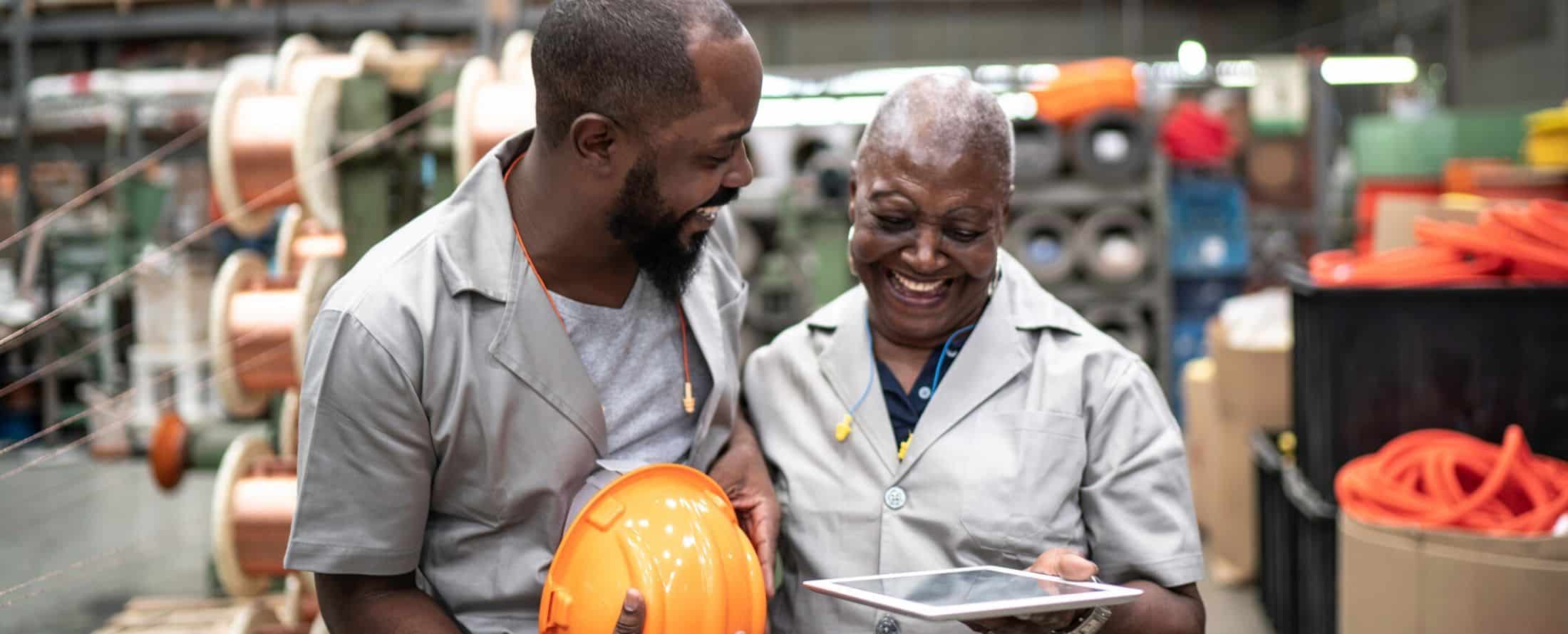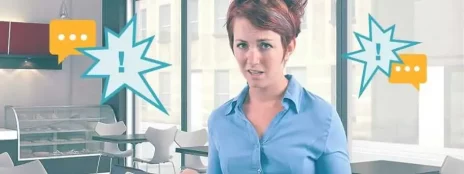Do your frontline employee engagement efforts sometimes feel like this?
We promise you’re not the only one. Employee engagement, particularly for employees out in the field, is critical in creating a happy, productive environment that motivates and empowers workers to do their best job.
Not to mention, employee engagement drives other positive business outcomes, like:
- Higher employee retention and lower turnover
- Stronger customer relationships
- More collaborative company culture
- Increased profits
If you’ve been considering adopting gamification techniques to motivate your frontline workforce and accelerate their engagement in your company, you’ve come to the right place. With the introduction of new digital tools and the growing acceptance of gamification in the workplace, there are new opportunities to effectively engage field workers.
Let’s take a look at three ways gamification can drive frontline employee engagement – and three more ways that impacts your bottom line.
But First, What Is Gamification?
If you’re new to gamification and gamifying employee engagement, you’re probably wondering what it is.
According to Gartner:
“Gamification is the use of game mechanics to drive engagement in non-game business scenarios and to change behaviors in a target audience to achieve business outcomes. Many types of games include game mechanics such as points, challenges, leaderboards, rules, and incentives that make game-play enjoyable.”
At its core, gamification uses game mechanics (points, levels, challenges) to tap into essential human desires (rewards, status, competition) to motivate employees to take a specific action.
Outside of employee engagement, gamification can be used for:
- Learning and development
- Employee training
- Recruitment
- Feedback and Recognition
- Internal collaboration
- Employee retention
So, Why Gamify Employee Engagement?
Gamifying employee engagement is a way to level up your relationship between your company and its employees. By using gamified methods, you can expect employees to:
- Better align with company values, processes, and applications
- Adopt the actions and practices learned in the gamified experience
- Better engage with other employees
- Become more productive in their roles
Also, gamification makes for an easy way to capture employee engagement KPIs with it being primarily based on point and reward systems.
Pro tip: To create an impactful gamified experience, go straight to the source in finding out what skills, tools, or products your employees need the most help with.
Benefits of Using Digital Gamification for Employee Engagement
Now, let’s take a look at specific examples as to how your company and frontline workforce can benefit from digital gamification for employee engagement.
1. Gamification Enhances Collaboration and Social Interaction
A struggle in engaging frontline employees is finding tactical avenues where they can socially interact and collaborate with other employees.
Through gamified processes, frontline employees increase their social interaction and collaboration by:
- Training and learning with other team members they may not have met before
- Sharing in friendly competition with other employees
- Participating in team missions where success is earned based on collective contributions
- Celebrating and congratulating their fellow team members when achievements are shared publicly
Employee Gamification Examples: Deloitte
Big Four accounting and consulting agency Deloitte revamped their onboarding process with gamification, in which newly hired employees create teams with other new members to collectively learn important company information, such as policies, compliance, and organizational values. As a result, new employees’ first interactions with the firm are built on teamwork and collaboration to achieve goals that benefit the broader organization together.
2. Employees Receive Real-Time Feedback with Gamified Tools
With frontline employees most frequently out in the field, managers can find it difficult to provide frequent feedback and recognition. By turning to game-based training and processes, employees receive authentic, real-time feedback in the form of rewards and recognition – and who couldn’t benefit from an extra pat on the back?
Employee Gamification Examples: Target
Cashiers at retail stores are often out on an island and rarely get feedback from managers unless there’s a major issue.
As a result, Target gamified the checkout process in its retail stores by measuring transaction speeds and customer checkout accuracy, while also calculating their workers’ success rates over time. With its gamified system, cashiers received real-time feedback with red and green lights that blink to show if items are scanned optimally. Before gamifying the checkout process, Target cashiers had little idea of how effective they were. Now they get instant feedback on every item.
3. Gamification Makes Onboarding and Training More Fun
Now that digital natives like Gen Z are officially entering the workforce, the days of onboarding paperwork and training videos are over. In its place, gamification is offering more appealing and interactive training experiences.
Benefits of gamified onboarding and training include:
- Employees are trained faster and at a lower cost
- Employees better retain information learned through gamified experiences – and better yet, they’re putting what they learned to work
- Better trained employees result in better outcomes for the business and services it offers to customers
Employee Gamification Examples: Siemens
A popular example of interactive employee education with gamification can be found in Siemens’ Plantville, a gaming solution in which employees, along with other stakeholders, learn about the company’s product and solutions while managing their own virtual manufacturing plant. According to the company, the game measures KPIs such as safety, quality, and employee satisfaction, which are all relevant skills to champion whether your frontline or C-Suite.
Bottom Line Impacts of Gamification and Employee Engagement
The positive impacts gamification has on employee engagement are quickly gaining traction – and while it is never as simple as 1+1=2, those impacts can also benefit an organization’s bottom line in three distinct ways.
1. Gamified Training for Frontline Employees Can Lead to More Profitable Customer Interactions.
Gamification makes for a fun, interactive way for employees to learn the business and its products, while also better serving the customers they interact with. For example, SAP instituted a sales training game called Roadwarrior, in which employees are placed in simulated sales meetings with customers to answer questions and deal with real-life interactions effectively.
2. Gamification Accelerates Employee Motivation and Enhances the Overall Employee Experience.
In our new workplace environment, tools like gamification can boost employee engagement, no matter where the employee sits, which positively impacts their employee experience. Better yet, an empowered and motivated frontline workforce means employees are coming in inspired to do their best job – which is what we call a win.
3. Last, and Arguably Most Important, When Employee Engagement Is Amplified, So Is Employee Productivity.
Frontline employees are essential in customer interactions and satisfaction, which can ultimately impact business performance. Through gamification, employees are better trained, more engaged, and more productive in their roles – leaving a positive, lasting impact on your business.
Are you ready to discover more ways to engage your frontline employees and build a happier, more productive workforce?
Download our ebook “Employee Engagement: How to Keep Your Frontline Employees Motivated at Work” today!
Most Frequently Asked Questions
Yes, gamification is a great way to increase engagement
According to Gartner, “gamification is the use of game mechanics to drive engagement in non-game business scenarios and to change behaviors in a target audience to achieve business outcomes. Many types of games include game mechanics such as points, challenges, leaderboards, rules, and incentives that make game-play enjoyable.”







